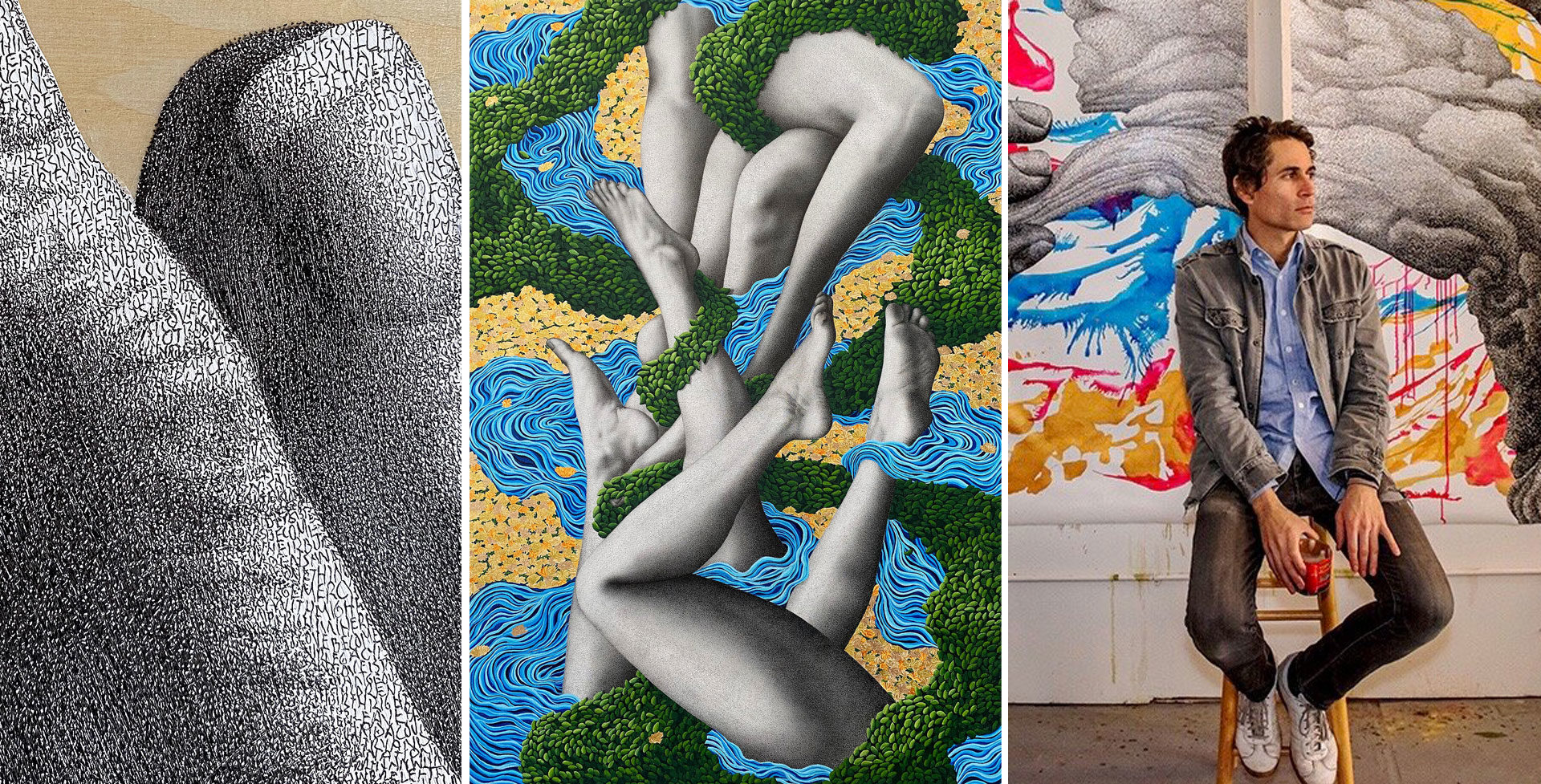Northern California artist Bryan Valenzuela has spent the last couple decades aiming to perfect a unique drawing technique involving the atomization of the figure by carving out shape, shadow and light with handwritten text. Paragraphs, sentences, phrases, and fragments are used simultaneously as both the form and content of each piece. As form, the text delineates figures and subjects layer upon layer as shading. Words varying in size from the minuscule and unreadable, to large and bold are used in a manner similar to crosshatching and stippling.
Though virtually unnoticeable from afar, once the viewer steps closer to each work they are engulfed in a barrage of words intermingled with other mixed media elements such as acrylic paint, gel transfer, gold leaf, and collage. As content, the language provides a sense of the inherent information and associations, metaphors and meanings that act as a meditation on the image.
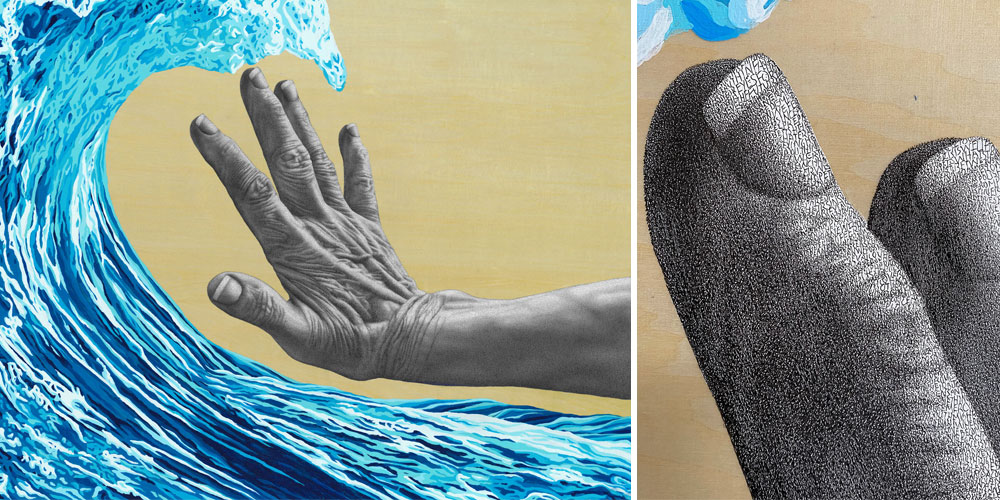
When the team came to you with this commission for the mural, was there a directive at all? How did that process start of coming up with what it ended up being?
It was just a blank space. and I knew where the location was, so, basically I did a lot of research on the area and, as I was researching, came up with the idea based on, the City Seal of San Francisco. I always think symbols and stuff like that are really interesting, but they’re very distilled down. I thought it was a good space to bring the ideas to life with something that’s a quick reference to what the city is about.
Plus it being, a Pulse Marriott, which is a Vacation clubby type thing and it’s very specific to that one city. It’s not just like a Marriott anywhere. so I just thought to bring the history of the city and the history of the region itself and the landscape and bring it to life in something that was a lot more expansive than just the seal itself.
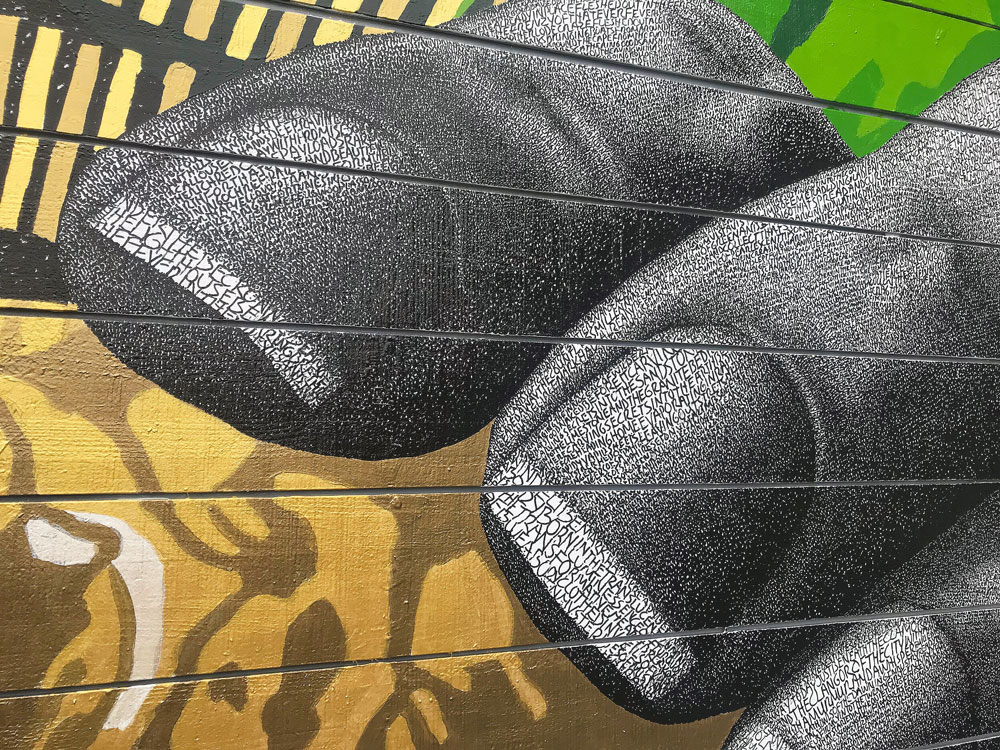
When I was looking through your work, I noticed a motif that comes up a lot are hands and also rope, and those are in this piece as well. Where did that start from for you, and what is it about those themes that has you revisiting them?
Ever since I went to art school, hands have always been something that was like the most difficult to draw. Hands are really expressive and I think that the way that I’ve channeled it is to use hands as sort of a larger representation of humanity rather than identity, so that it takes on the identity of humans at large rather than the identity of certain race or gender or stuff like that. It can broadly speak to the most people, especially if I do it in black and white and there’s no color attached to the actual drawing. I just thought it was a good way to represent humanity at large.
At what point do you write the words that go along with a piece and how do the visuals and the text come together for you?
I feel like different pieces are different. For something like this, I did a lot of research on the history of the city of San Francisco, the settlers, even through all the tribes that were there and trying to understand where it came from and where it’s going. The script for this one is more of a poetic history of the landscape, from when people started inhabiting it, then when people from across the world started coming and, all through the Gold Rush, the prohibition era, the turmoil of the 1960s, the tech boom, and then where the future lies from there.
I actually started writing it pretty close to when I created the mural. I wrote 10 really dense pages, and I print those out. I try to write it almost like lyrics, like epic poetry that was sung in a way because it’s easy to memorize. As I’m writing it, I start to memorize other parts of it and then by the middle of the mural, I don’t have to refer to the script as much. I kind of improvise or do a stream of consciousness if I’m in the flow, and then sort of fall back on the script and keep going. It’s almost like jazz–taking a theme, expanding that theme, coming back to the theme, and turning it on its head a little bit. There’s passages you could read that are very clear and then some of those passages start to descend into shadow and become more like secrets. Some of the things I wrote in the darker parts are a little more wild or free flowing.
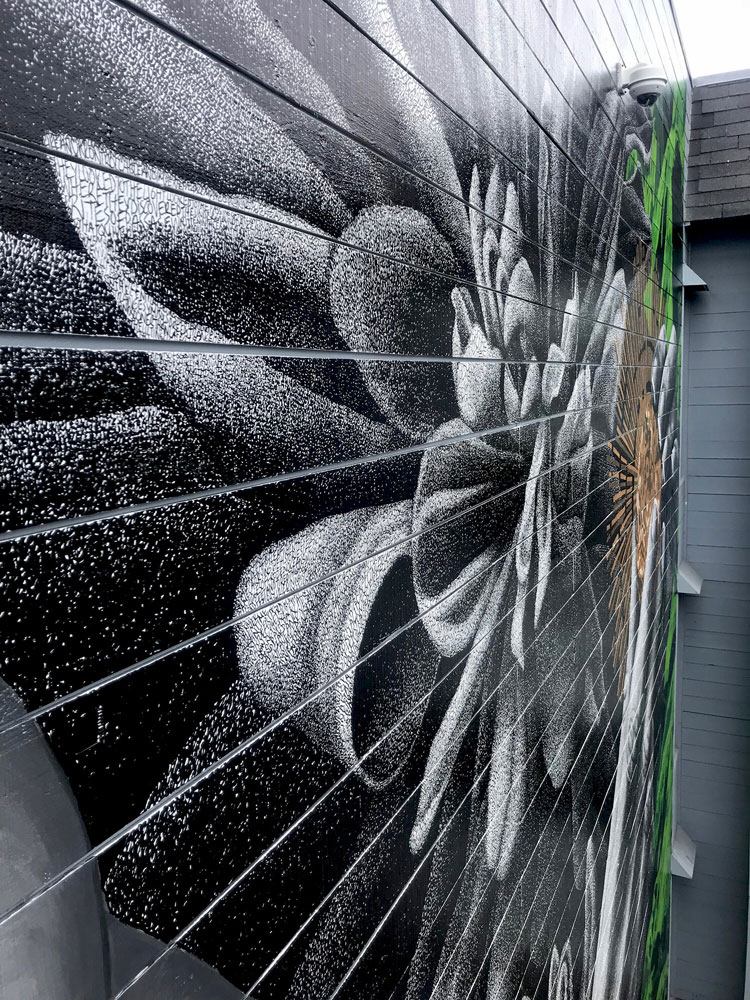
That’s really interesting. How long did the actual execution take?
This one took five weeks. It was only supposed to take three weeks, but the weather was really intense. It started raining and then everything I had done in the last hour just started dripping all the way down the wall.
How does creating sort of public art differ from creating art that’s going to stay in someone’s house, or, that’s not going to be consumed by so many people over so many years?
There is a major difference and what I tend to think about when I’m approaching public art as opposed to a private commission is that public arts are something people stumble upon it. It could be people who normally aren’t exposed to art or who don’t know anything about or just are inexperienced with art itself. So, right there, you have an opportunity to engage somebody and really pull them in. They also don’t know anything about you as an artist. When you go to a gallery show, you’re like, “I know the artist. I know their history.” But the public art is a fine line between making something broad and then making something that’s quote-unquote high brow.
Public art’s really hard because you’re tightrope walking between all these things and trying to pull people in and inspire them or make them think about things differently. It’s also about beautifying that space and making it something to where people enjoy being there and enjoy either the color or the drawing or something that hits people.
It’s already been a couple years since the mural was installed. What are you working on now? Has your work continued to evolve, or are you still wrestling with the same themes?
I feel like I’m always wrestling with similar sentiments, but how to express those things in a different way. I started doing a bunch of ceramic plates and drawing on ceramic. I make the plates with an expert potter and it’s been a wild ride trying to figure out how to do this. I’m taking these two 10-inch blades that are a gradient from white all the way to black through white, through grays and all the way blacks, on this large wall and a bunch of them, and drawing anatomical hearts with a poem that I wrote.
Then, I break the plates and assemble them back together in a traditional Japanese style, which is called kinsugi. You take this lacker push, put them back together and through a long series of curing and doing various things to it, it’s then lined with gold and then completely mended and stronger than the original vessel.
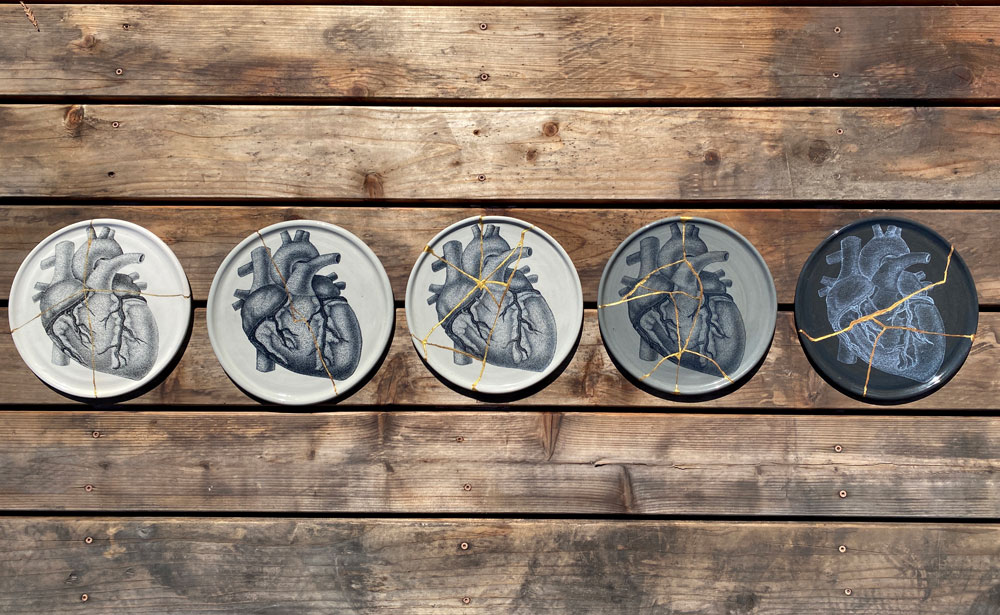
It’s kind of a metaphorical statement for all these broken hearts but we’re mending them back together. Sort of a pandemic statement and reflective of the time, in a way. I always feel that art is a unifier and I always think about taking the broadest swath and things that you think are disparate and uniting them together. Regardless of your opinion about what happened over the last bunch of years, there was a lot of broken hearts that need mending. Having that kind of metaphorical act of attempting to mend them is kind of powerful, you know?
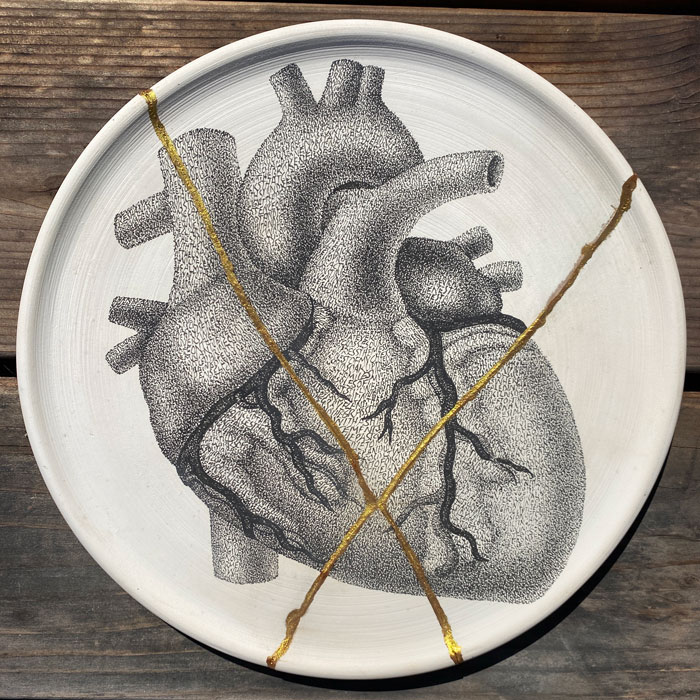
Images courtesy of Bryan Valenzuela
